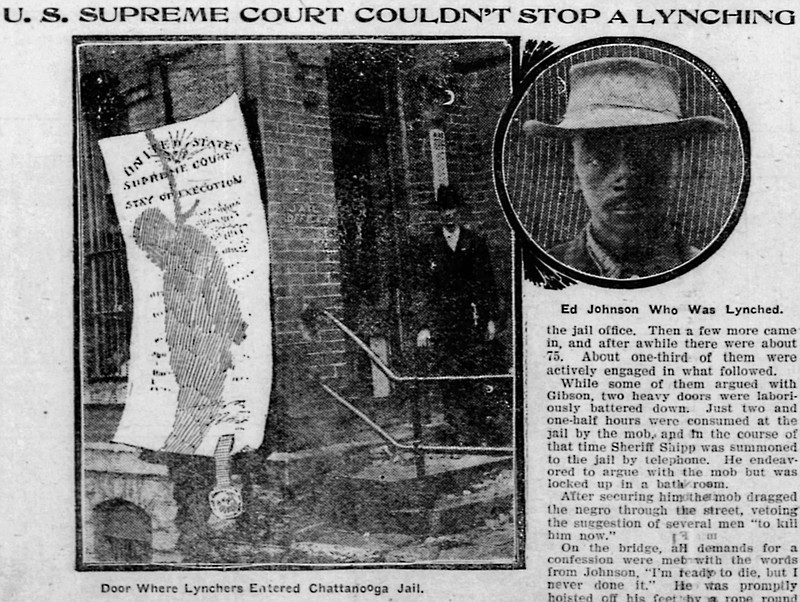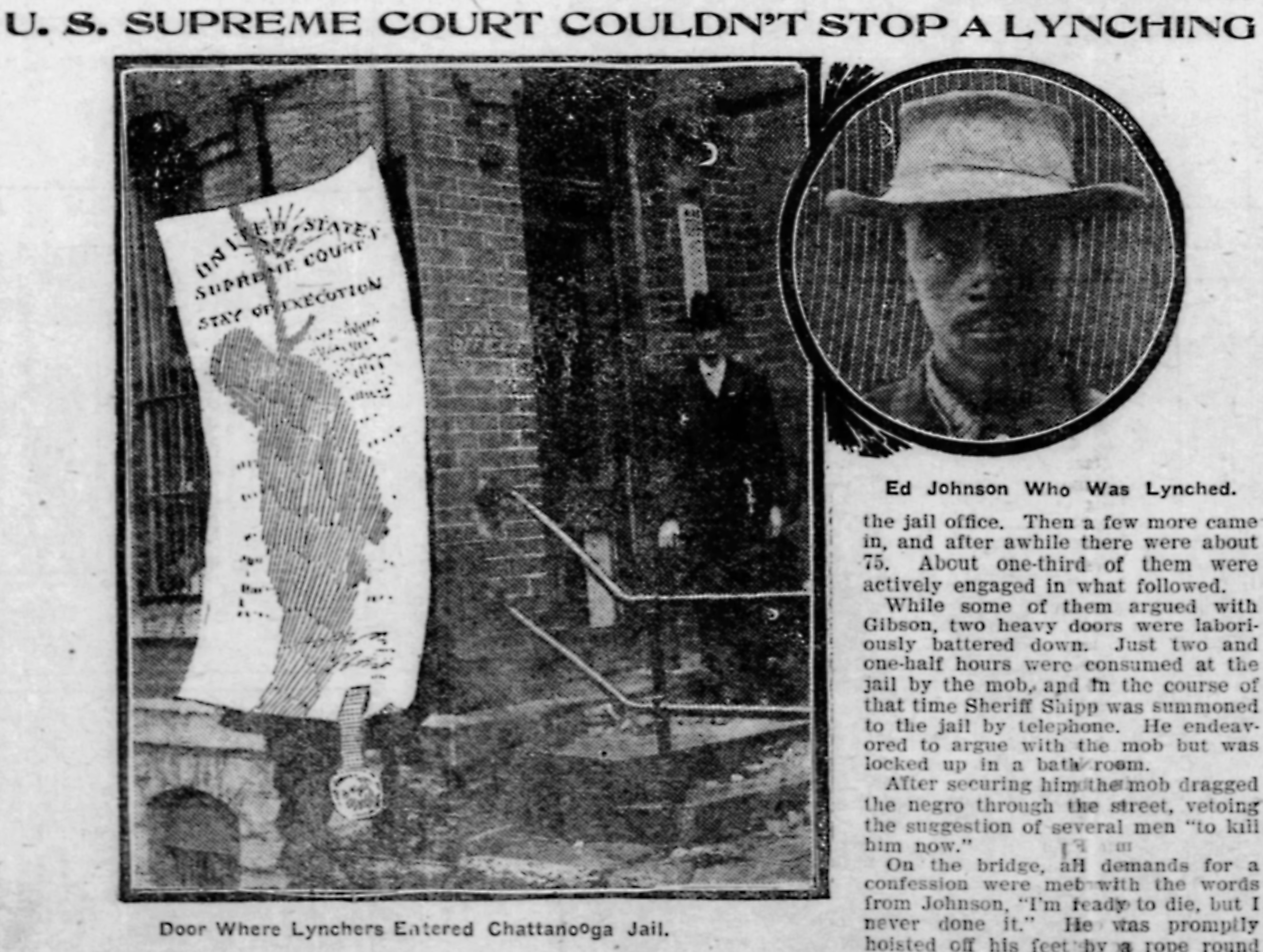If you go
› What: Ed Johnson Memorial artist team announcement and commemoration of the 112th anniversary of Ed Johnson’s lynching on the Walnut Street bridge. The evening will begin with a showing the documentary “I Am A Innocent Man: the Ed Johnson Story.”› Where: Bessie Smith Cultural Center200 ML King Blvd., Chattanooga, TN 37403› When: Tonight at 6 p.m.
Lost to Chattanooga history for 112 years, a photograph of Ed Johnson finally is being uncovered today on the anniversary of his lynching.
Joseph Malley, a Dallas-based attorney who has been researching Ed Johnson's Supreme Court Case for a book, found one photo with the help of Chattanooga residents Mariann Martin, Sam Hall and David Moon. Hall then was able to find a better quality version of the photo, which ran in a wire story titled, "U.S. Supreme Court couldn't stop lynching."
Johnson was lynched from the Walnut Street Bridge in 1906 after he was accused of raping a white woman. Johnson's attorneys, Noah Parden and Styles Hutchins, argued his case before the U.S. Supreme Court, persuading the court to grant him a stay of execution. But a mob broke into the jail and took matters into their own hands.
Johnson's case was the first time in history the Supreme Court gave a stay of execution and the first and only time the high court held a criminal trial, which ended with Hamilton County Sheriff Joseph F. Shipp being held in contempt of court. The justices said Shipp failed to keep Johnson safe, noting some of his deputies took part in the lynching, according to a book called "Contempt of Court."
To researchers' knowledge, the photo has never been printed in a Tennessee newspaper. Malley and Moon said one possible explanation for that is because, at the time, Tennessee newspapers generally did not publish photos of African-Americans.
The photo shows the door where the mob entered the jail and a headshot of Johnson in a separate circle frame to the side. The man standing at the entrance of the jail is not Johnson, Moon said. A superimposed drawing of a letter that represents the Supreme Court's order is shown with the silhouette of a hanging man shadowed over it.
A drawn object that resembles a wrist watch is attached to the bottom of the drawing, but Moon said it's not likely a wrist watch, as they were not popular until after the first World War. If the artist was trying to depict time, a pocket watch would have been more likely, he said.
Malley, a history buff and attorney specializing in constitutional law, began his hunt for the photo after attending a seminar and hearing former Chattanooga Times reporter and co-author of the book "Contempt of Court" Mark Curriden's presentation on the case.
He said he was fascinated by the case and the history and had always wanted to write a book. But he wanted to see a picture of Johnson, especially because Malley kept reading that many photos had been taken of Johnson while he was jailed.
Through his research, he learned that most of the photos and documents relating to Johnson were destroyed after the lynching. This was because federal authorities began investigating the lynching and several people were in danger of being jailed.
So Malley searched for six months before Martin mentioned how Southern newspapers typically didn't publish photos of African-Americans. Malley then began searching newspaper archives further west and struck gold with a Fort Worth Telegram article.
The night he found the article, he said an eerie coincidence happened.
"I knew the courthouse was hit by lighting in 1910, destroying most of the records. In jest I thought, Johnson sent a message," Malley said in an email. " On the night I found the picture of Ed Johnson recently, it was storming in Dallas, raining and lightning."
As he hit the search button to look for Johnson's picture on a few websites, a bolt of lightning hit close to his building and right then, one of the searches returned successful.
"... I thought, did Johnson send me a message?" he said jokingly.
Later, Hall was able to track down the better copy of the photo in the Topeka (Kan.) Daily Herald.
Hall, of DeepZoom Chattanooga, and Moon, of Picnooga, two online historical photo databases, helped Malley authenticate the photo by cross-checking the entrance of the jail with other photos of that time to verify it was indeed the Hamilton County Jail.
Moon said the photo is one of the three most important missing pieces in Chattanooga's history.
He hopes the photo spurs people to look into their own collections and maybe even find more photos of Johnson that people might not have known they had. He also hopes it's a step toward improving race relations in Chattanooga.
Contact staff writer Rosana Hughes at rhughes@timesfreepress.com or 423-757-6327 with tips or story ideas. Follow her on Twitter @HughesRosana.


